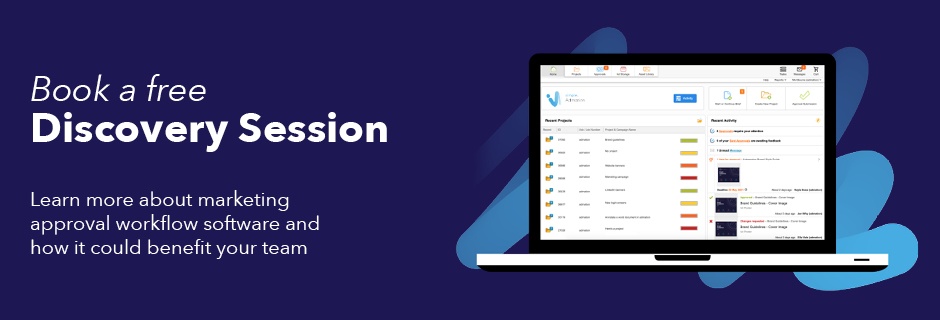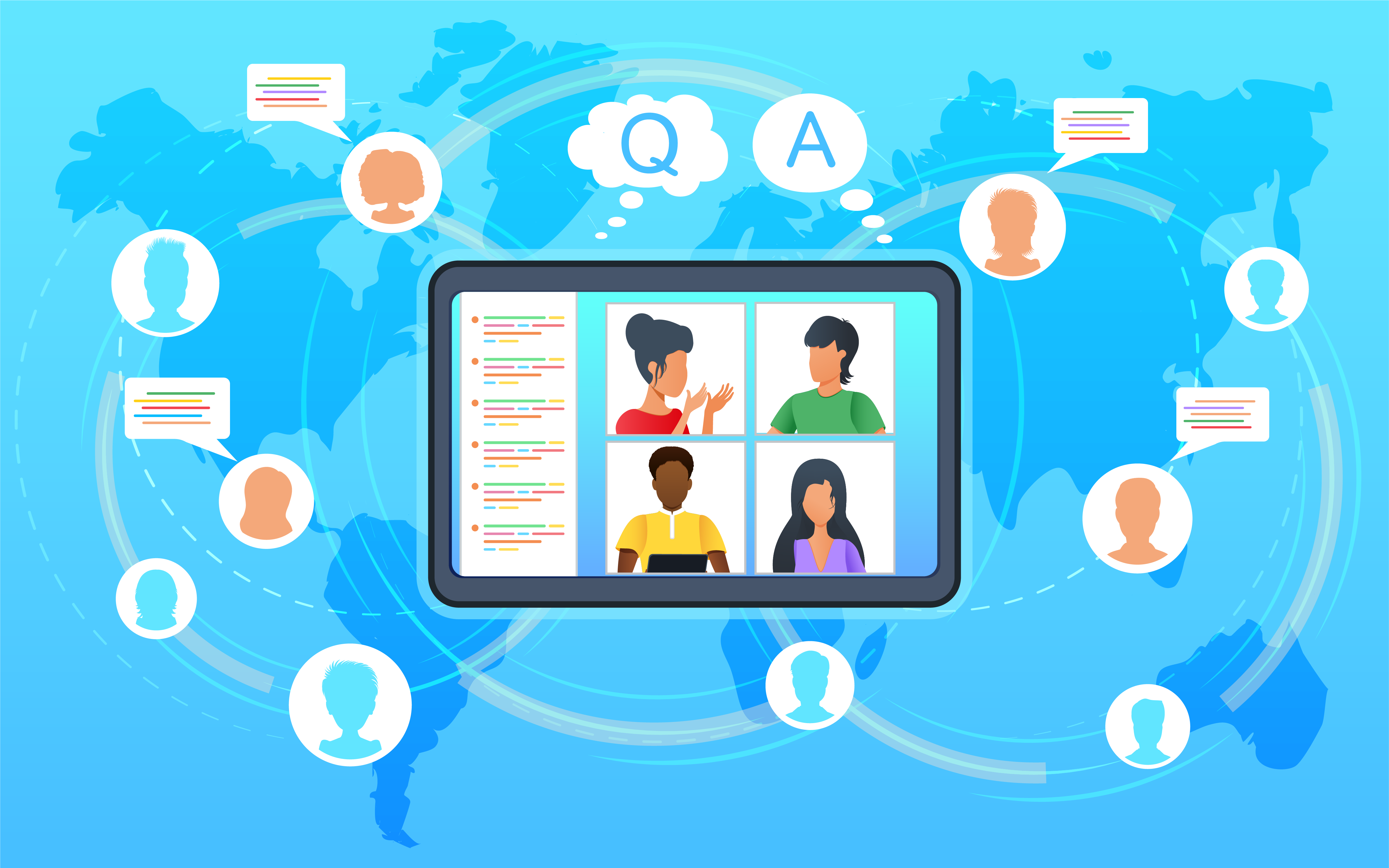
Tips To Improve Collaboration for Remote Teams Working on Creative Projects
By Jodie Byass
A few years ago a Stanford University study found that collaboration fosters motivation and transforms "work into play". In simple terms, effective collaboration creates a dynamic environment where team members can cross-pollinate and create. It becomes a space where team members are inspired to come up with great ideas and do excellent work.
Because of this, effective and efficient creative collaboration is crucial in any creative project. And it sounds simple to implement, doesn't it? Sure, that was once was the case and teams had their collaborative processes in place. But our past two year living with COVID-19 has required teams across the world to find new ways to collaborate.

While remote working has seen some team members working more productively, after two years of working in bedrooms and kitchen benches, others are feeling fatigues and uninspired. Add to that the fact that working as a team and collaborating on creative projects remotely in itself poses a challenge, and it's easy to see that creativity could suffer. In fact, according to a recent market report, collaboration is one of remote teams? top challenges.
So, with remote working becoming the norm and expected to be a part of the "new normal," how can creative teams collaborate when they can no longer have face-to-face meetings or access to physical designs.
In this post, we'll look at this question in more detail.
Tips To Improve Collaboration and Communication Within Creative Teams
Despite creative teams being forced to work remotely, creativity can still prevail. It just needs the right processes, environment, and tools. With that in mind, let's look at some actionable tips teams can implement to create the fertile soil where creativity will grow.
Restructure
When creative teams inevitably needed to make the shift to remote work, they probably kept their team structures the same. However, this traditional approach isn't ideal for remote creative problem-solving.
For example, with a traditional approach, any decisions would need to go through a hierarchical process of approval where team members aren't able to take on specific tasks and make decisions themselves.
To overcome this, it's important that the creative team has agility at its core. If they don't, it's challenging for them to respond to situations where things don't go as planned.
To be agile, teams should be self-organizing, autonomous,and have all the right people to complete the project from start to finish. And when they are, the team will be flexible and proactive while, at the same time, being highly organized. This makes them more productive and enables them to respond to changes effectively and while encouraging creativity.
Create an Environment That Promotes Communication
The diversity in a creative team encourages questions and debates but also leaves room for criticism. In simple terms, all the members of the team have different communication styles, so they'll have to adapt to understand each other's point of view.
How teams deal with this can influence the way they communicate and collaborate. As a result, it's crucial to foster an environment where team members understand that everyone on the team's input is valuable and no questions or suggestions will be frowned upon.
This, largely, depends on two things. The first is respect. With mutual respect, when something is not working, teams can communicate this to team members and guide them into fixing it.
It also relies on trust. Without trust, teams can grow irritable and inflexible. With trust, however, teams can negotiate, support, and respect each other. This provides a safe space for them to voice their opinions and concerns which, in turn, promotes motivation and flexibility. As a result, creative teams collaborate better.
Plan Properly
It's simple, when there's a plan in place, team members know where they are, and where they're going to. When they know this, they're able to collaborate more effectively on what needs to be done.
To enable teams to do this, the plan must be comprehensive, well-detailed, and include things like the number of stages in the project, due dates for every stage, and the scope of the project. In simple terms, it must outline the entire creative workflow from project inception to project completion.
Also, to be most effective, the team's goals and milestones should be clearly defined in the brief before any work commences on the project. Therefore, the brief should capture all the essential information that the team needs. This eliminates scrambling for information later on and enables the team to avoid making assumptions and mistakes.
When the project is laid out before work commencing, every team member knows their role and what they need to do. The result is that, when the project and the roles of team members are clearly defined and understood, collaboration improves.
The Right Tools
This is probably one of the most important aspects when it comes to effective and efficient creative collaboration. Simply put, teams need the right tools to improve their creative collaboration workflow. Even before the pandemic, tools like email and spreadsheets were cumbersome and less-than-optimal in promoting collaboration and communication.
With teams working remotely, these are even less efficient and create more problems than they solve. This leads to frustration which causes a domino effect leading to delays in the project and missed deadlines.
With that in mind, let's look at some tools teams can use to improve collaboration for their creative projects:
1. Chat tools. Tools like Slack offer teams the ability to communicate in an instant. As such, they're far more efficient than email and it enables teams to improve their communication. For one, they enable teams to discuss projects remotely either one-on-one or through group discussions. Also, many of these tools offer teams the ability to share files and have screen-sharing features.
2. Task management tools. These tools like Trello provide complete transparency on any project. As such, teams can see at a glance where every project is, what needs to be done, and by when. This, in turn, promotes collaboration and teamwork.
3. Videoconferencing tools. At a time when in-person meetings are no longer possible, videoconferencing tools like Zoom are of immense value. With these tools, teams can have brainstorming or one-on-one meetings to discuss parts of the project. At the same time, it allows teams to record meetings to ensure that no information is lost.
4. Marketing project management software. These tools give teams a these tools give teams a centralized online solution that enables them to manage their creative projects from briefing to collecting feedback and final approval and assets. This gives them greater visibility over their projects and is flexible enough to allow for changing work priorities.
4. Online markup and proofing software. Online Proofing software such as Simple Admation allows teams to manage their approval workflow online. When using approval workflow software, everything from project briefs and documents, artwork creation, to final artwork is managed and approved by all role-players through a central platform. This eliminates manual administration of the process and leaves more time for collaboration and creativity.
5. Marketing workflow software. Marketing workflow software is an all-in-one solution to marketing project management. It provides teams with all the tools they need for project management, resource management, online proofing, and approval workflow, and digital asset management. This enables them to streamline their marketing processes, work more efficiently, and deliver better quality work.
The Bottom Line
For any successful creative project, effective collaboration is essential. This has always been the case, but the COVID-19 pandemic has put an increased emphasis on it. Despite its importance, though, many teams are still struggling with effective collaboration and communication.
Hopefully, this post helped illustrate some actionable tips creative teams can implement to improve collaboration.
To find out more about Admation and how it can improve collaboration or schedule a demo, visit our website or contact us for more information.
{{cta('3c7db2a0-d59d-4bcc-9f59-96fd37ebf1ee','justifyleft')}}
